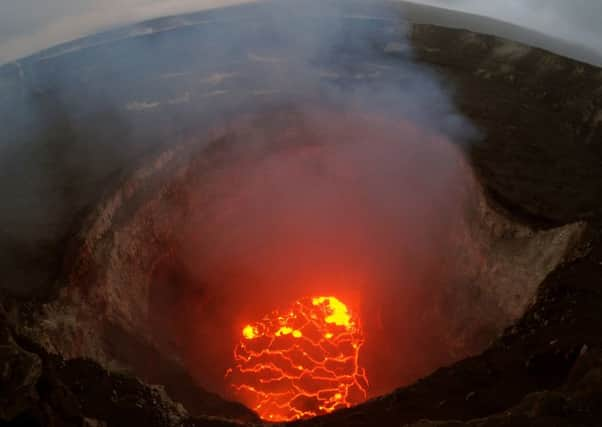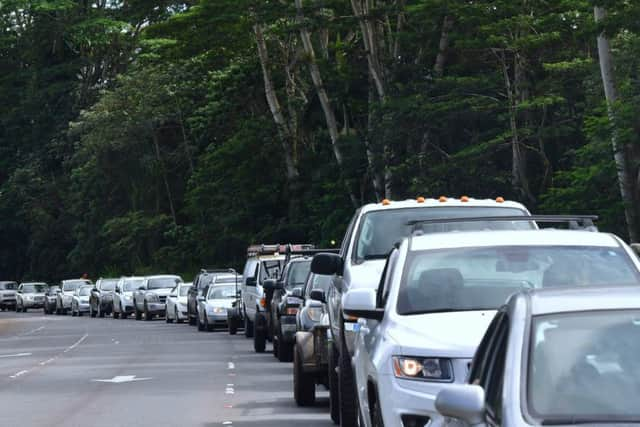Dozens of homes destroyed as Hawaii volcano eruptions intensify


Molten rock, toxic gas and steam have been bursting through openings in the ground created by the volcano, which is one of the most active in the world, since last Friday.
Originally five homes were believed to have been destroyed but officials now say 26 properties have been decimated. Another four unspecified structures were also covered by lava, Hawaii County officials said.
Advertisement
Hide AdAdvertisement
Hide AdSome of the more than 1,700 people who evacuated were allowed to briefly return to gather medicine, pets, and other necessities. They will be able to do so each day as long as authorities believe it is safe.


Amber Makuakane Kane, 37, a teacher and single mother-of-two, said her three-bedroom house was across from a fissure that opened Friday. At the time, “there was some steam rising from all parts of the yard, but everything looked fine,” Makuakane said.
On Saturday, she received alerts from her security system that motion sensors throughout the house had been triggered. She later confirmed that lava had covered her property.
Makuakane grew up in the area and lived in her house for nine years. Her parents live in the same subdivision.
“The volcano and the lava - it’s always been a part of my life,” she said. “It’s devastating...but I’ve come to terms with it.”
Lava has spread around 387,500 square feet surrounding the most active fissure, though the rate of movement is slow. There was no indication when the lava might stop or how far it might spread.
“There’s more magma in the system to be erupted. As long as that supply is there, the eruption will continue,” US Geological Survey volcanologist Wendy Stovall said.
Cherie McArthur wondered what would become of her macadamia nut farm in Lanipuna Gardens, another evacuated neighbourhood near the volcano. One of the year’s first harvests had been planned for this weekend.
Advertisement
Hide AdAdvertisement
Hide Ad“If we lose our farm, we don’t know where we’re going to go. You lose your income and you lose your home at the same time,” said Ms McArthur, who’s had the farm for about 20 years. “All you can do is pray and hope and try to get all the information you can.”
About 250 people and 90 pets spent Saturday night at shelters, the American Red Cross said.
The number of lava-venting fissures in the neighbourhood has grown to as many as ten, Ms Stovall said, though some have quieted at various points. Scientists expect the fissures to keep spewing.
The lava could eventually be channelled to one powerful vent while others go dormant, as has happened in some previous Hawaii eruptions, Ms Stovall said.
Kilauea has been continuously erupting since 1983 and is one of the world’s most active volcanoes. In 2014, lava burned a house and covered a cemetery.
The USGS’s Hawaiian Volcano Observatory issued a notice in mid-April that there were signs of pressure building in underground magma, and a new vent could form on the cone or along what’s known as the East Rift Zone.
The crater floor began to collapse on April 30, triggering earthquakes and pushing lava into new underground chambers.
On Friday, a magnitude-6.9 earthquake hit the area. It was Hawaii’s largest earthquake in more than 40 years.
Advertisement
Hide AdAdvertisement
Hide AdNoah and Laura Dawn own a retreat centre about three miles downhill from the most active vents. They were clearing out items on Sunday and relocating up the coast indefinitely. “We’re just removing all things of value to us and precious things because I have the feeling it could get real - real, real fast,” Noah Dawn said.